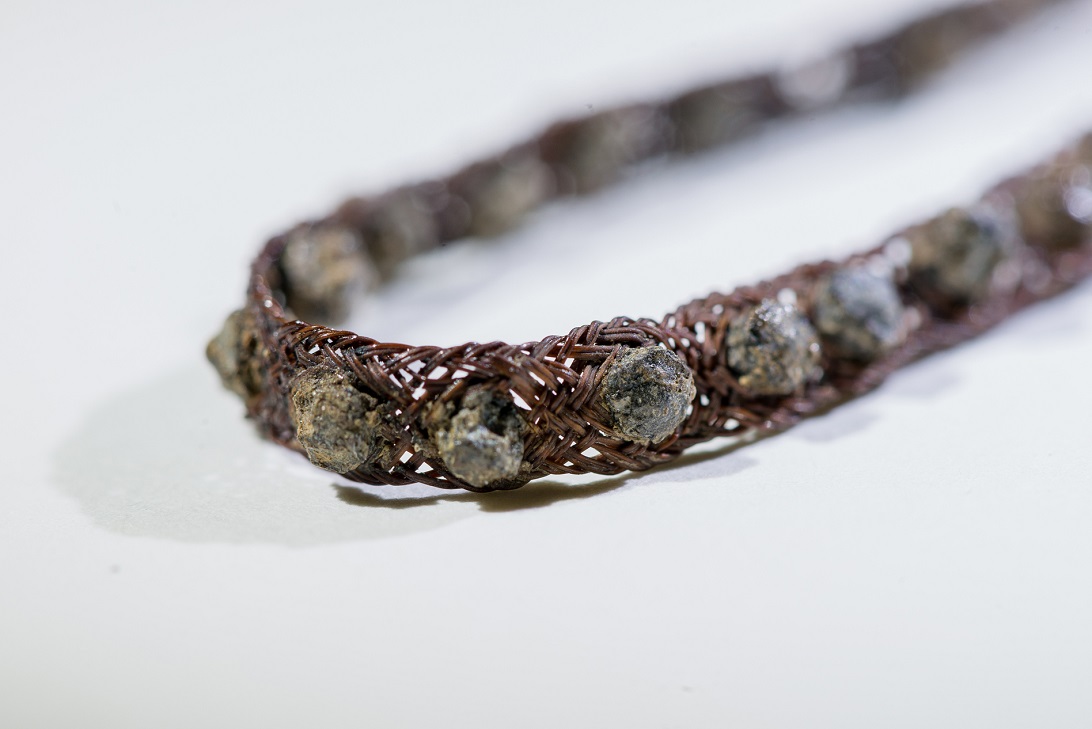A range of recent excavation and assessment projects have demonstrated the significance of upland wetlands in Dartmoor’s past, for both extractive industry in the recent past and for social or spiritual activities in prehistory.
Antiquarian sources reported the recovery of stone tools from below and within Dartmoor’s peat, but recent work as part of both peatland restoration schemes, and chance finds, have demonstrated preservation of internationally important archaeological sites and landscapes within the peat across the moor.
The most spectacular finds occurred in 2011 with the excavation and recovery of the cremated remains of a young woman within the Whitehorse Hill cist, a burial monument constructed within an active peatland around 1800 BC. The special preservation qualities of the peat resulted in the near complete preservation of all the burial goods, which included the oldest turned wood yet recovered in Britain, a unique composite textile object, woven basketry, a tin-studded bracelet, and all wrapped in the pelt of a bear. The full analysis and presentation of the finds was supported by English Heritage and Dartmoor National Park Authority and published in 2016.

It is not yet clear whether the Whitehorse Hill cist is a unique burial monument having been built in an active peatland, and there remains the strong possibility that more of these such monuments are waiting to be found within peat on the high moor. An even older monument was excavated and described in the journal Antiquity in 2011. A stone row was erected within an active peat-forming environment on Cut Hill during the mid-4th millennium BC, and elements of the monument remain preserved within the eroded and disturbed peatland. In 2015 Alan Endacott, a local archaeologist, recognised a prehistoric stone circle just emerging from peat close to Sittaford Tor. Excavations and subsequent radiocarbon dating of the peat during 2016-17 showed that the circle was built sometime before the late third millennium BC, and probably on dry heath that subsequently developed into a peatland. An environmental sequence from the peat contained an important record of intensification of grazing activities across the upland during the late Bronze Age.
Integration of Historic Environment managers within the Dartmoor peatland partnership scheme is ensuring a joined-up management approach to peatland restoration. This includes full consideration of the Historic Environment at the planning and subsequent restoration implementation stages, to ensure protection and (where appropriate) further work on these important monuments, as well as the detailed environmental archives that the peat itself contains.
Images: (Top left) Recovery of samples of peat from under one of the Cut Hill stones; (Middle) Tin-studded woven bracelet preserved in the Whitehorse Hill cist; (Bottom left) Andy Jones (Cornwall Archaeological Unit) next to the Whitehorse Hill cist prior to detailed excavation in 2011 © Ralph Fyfe, University of Plymouth
Professor Ralph Fyfe, Plymouth Univeristy & Lee Bray, Dartmoor National Park.











